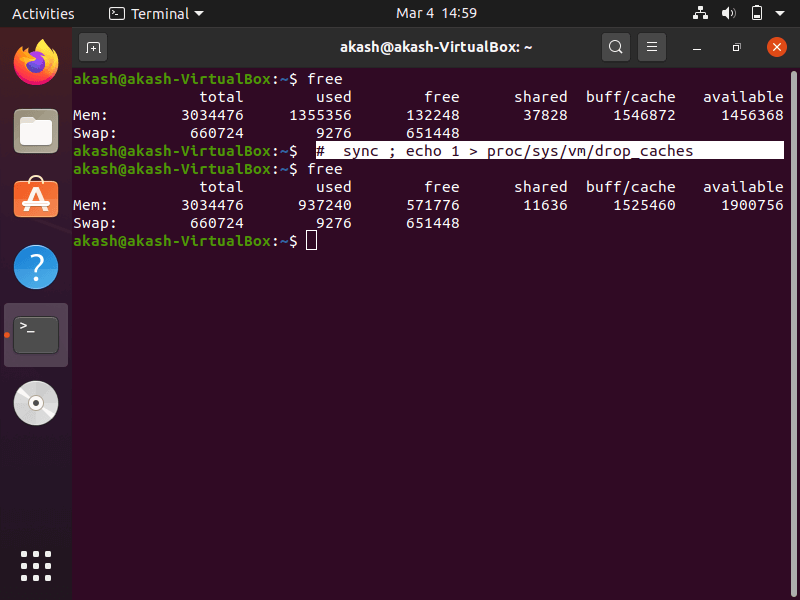Clearing PageCache, dentries and inodes in Linux
But now, let’s look at the different techniques you can use in the terminal window to see the RAM usage on your Linux computer. The free Command. The free command gives you a table of the total, used, free, shared, buffer/cache, and available RAM on your computer. It also shows you the total amount of swap space configured, and how much is. If you have to clear the disk cache, the first command is safest in enterprise and production as “.echo 1.” will clear the PageCache only. It is not recommended to use third option above “.echo 3 ” in production until you know what you are doing, as it will clear PageCache, dentries and inodes. Clear pagecache2. Clear dentries, inodes3. Clear pagecache, dentries, inodes. I am running a c tool on Linux machine. The tool crashes because of memory issues. I have checked the RAM details of my machine. Total used free shared buffers cached Mem: 7 50 0 15 12758 -/+ buffers/cache: 2972 12825 Swap: 8001 345 7655.



Download warp stabilizer premiere pro cc 2018. Like any other operating system, GNU/Linux has implemented a memory management efficiently and even more than that. But if any process is eating away your memory and you want to clear it, Linux provides a way to flush or clear ram cache. Use the commands below to clear PageCache, dentries and inodes, or PageCache, dentries and inodes. Keep it mind it isn't a good idea to auto clear RAM cache on production servers. However, if you are troubleshooting an issue with a runaway process or need to ensure all fetching of data comes from disk clearing cache can be very helpful.
To clear PageCache only.

To clear dentries and inodes.
Clear Ram Cache Linux Windows 10
Clear PageCache, dentries and inodes.
Clear Cache Linux Mint

Steps to clear cache on a recurring schedule
Step 1: Create a script to clear PageCache, dentries and inodes.
Step: Edit crontab to run the script every 59 minutes.
Verify the configuration
Using the tail command we can view the last X lines of the cron log. With the command below I am viewing just the last 14 lines and I can see when the drop_caches.sh is run and when completed. In the example below the script was run at 09:59:01 and again at 10:59:01. This will be repeated every 59 minutes per the crontab configuration.
